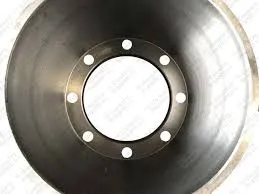
-
 Afrikaans
Afrikaans -
 Albanian
Albanian -
 Amharic
Amharic -
 Arabic
Arabic -
 Armenian
Armenian -
 Azerbaijani
Azerbaijani -
 Basque
Basque -
 Belarusian
Belarusian -
 Bengali
Bengali -
 Bosnian
Bosnian -
 Bulgarian
Bulgarian -
 Catalan
Catalan -
 Cebuano
Cebuano -
 Corsican
Corsican -
 Croatian
Croatian -
 Czech
Czech -
 Danish
Danish -
 Dutch
Dutch -
 English
English -
 Esperanto
Esperanto -
 Estonian
Estonian -
 Finnish
Finnish -
 French
French -
 Frisian
Frisian -
 Galician
Galician -
 Georgian
Georgian -
 German
German -
 Greek
Greek -
 Gujarati
Gujarati -
 Haitian Creole
Haitian Creole -
 hausa
hausa -
 hawaiian
hawaiian -
 Hebrew
Hebrew -
 Hindi
Hindi -
 Miao
Miao -
 Hungarian
Hungarian -
 Icelandic
Icelandic -
 igbo
igbo -
 Indonesian
Indonesian -
 irish
irish -
 Italian
Italian -
 Japanese
Japanese -
 Javanese
Javanese -
 Kannada
Kannada -
 kazakh
kazakh -
 Khmer
Khmer -
 Rwandese
Rwandese -
 Korean
Korean -
 Kurdish
Kurdish -
 Kyrgyz
Kyrgyz -
 Lao
Lao -
 Latin
Latin -
 Latvian
Latvian -
 Lithuanian
Lithuanian -
 Luxembourgish
Luxembourgish -
 Macedonian
Macedonian -
 Malgashi
Malgashi -
 Malay
Malay -
 Malayalam
Malayalam -
 Maltese
Maltese -
 Maori
Maori -
 Marathi
Marathi -
 Mongolian
Mongolian -
 Myanmar
Myanmar -
 Nepali
Nepali -
 Norwegian
Norwegian -
 Norwegian
Norwegian -
 Occitan
Occitan -
 Pashto
Pashto -
 Persian
Persian -
 Polish
Polish -
 Portuguese
Portuguese -
 Punjabi
Punjabi -
 Romanian
Romanian -
 Russian
Russian -
 Samoan
Samoan -
 Scottish Gaelic
Scottish Gaelic -
 Serbian
Serbian -
 Sesotho
Sesotho -
 Shona
Shona -
 Sindhi
Sindhi -
 Sinhala
Sinhala -
 Slovak
Slovak -
 Slovenian
Slovenian -
 Somali
Somali -
 Spanish
Spanish -
 Sundanese
Sundanese -
 Swahili
Swahili -
 Swedish
Swedish -
 Tagalog
Tagalog -
 Tajik
Tajik -
 Tamil
Tamil -
 Tatar
Tatar -
 Telugu
Telugu -
 Thai
Thai -
 Turkish
Turkish -
 Turkmen
Turkmen -
 Ukrainian
Ukrainian -
 Urdu
Urdu -
 Uighur
Uighur -
 Uzbek
Uzbek -
 Vietnamese
Vietnamese -
 Welsh
Welsh -
 Bantu
Bantu -
 Yiddish
Yiddish -
 Yoruba
Yoruba -
 Zulu
Zulu
leading/trailing drum brake
Understanding Leading and Trailing Drum Brakes An Overview
Drum brakes are an essential component of many vehicles, providing reliable stopping power through a simple yet effective mechanism. Within the category of drum brakes, the terms leading and trailing refer to the positioning and function of the brake shoes inside the drum. Understanding these concepts is crucial for anyone interested in vehicle maintenance and performance.
Understanding Leading and Trailing Drum Brakes An Overview
In a typical drum brake setup, the leading shoe is the one that is engaged first during braking. When the vehicle slows down, the leading shoe makes contact with the drum and pushes against it. This action tends to draw the shoe into the drum, increasing the force of the friction and consequently enhancing the braking efficiency. The leading shoe, therefore, plays a pivotal role in the initial application of the brakes, providing robust deceleration when needed.
leading/trailing drum brake

Conversely, the trailing shoe is engaged after the leading shoe. As the vehicle continues to decelerate, the trailing shoe makes contact with the drum but does not have the same level of engagement as the leading shoe. This shoe is designed to stabilize the braking force and help maintain even pressure across the drum. While it contributes to the overall braking effect, its primary role is to support the leading shoe and aid in the smooth operation of the brake system.
One of the advantages of leading and trailing shoes design is its self-energizing feature. When the leading shoe makes contact with the drum, the drum's rotation pushes the shoe against the backing plate. This self-energizing effect increases the friction force and enhances the overall braking power without requiring excessive pedal pressure. This allows for a more responsive braking system, which is particularly beneficial in various driving conditions.
However, leading and trailing drum brakes are not without their drawbacks. One common issue is the potential for brake fade, especially during prolonged use, which can lead to diminished stopping power. Additionally, if the brake shoes wear unevenly, it can result in noise and reduced effectiveness, necessitating regular checks and maintenance.
In conclusion, leading and trailing drum brakes represent a critical aspect of automotive braking technology. Their unique design allows for effective braking through a simple mechanism that combines friction and self-energizing principles. Understanding how these components function together can provide valuable insights for vehicle enthusiasts and professionals alike, ensuring that brakes remain in optimal condition for safe driving. Regular maintenance and timely inspections are essential to guarantee that both leading and trailing shoes function effectively, ultimately enhancing vehicle safety and performance.
-
What Are Drum BrakesNewsJul.07,2025
-
Understanding Brake Drum MaterialNewsJul.07,2025
-
Semi-Trailer Brake Drum: A Key Component for Extreme Loads and Long-Distance TransportNewsJul.07,2025
-
Drum Brake Pads for SaleNewsJul.07,2025
-
Brake Drums for SaleNewsJul.07,2025
-
Brake Drum ManufacturerNewsJul.07,2025
-
Aluminum Brake Drums: The Future of High-Performance CarsNewsJul.07,2025
